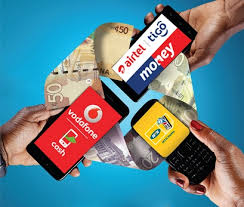Mobile money transactions have emerged as the most preferred digital payment method in Ghana, according to a research conducted by a Research Team at Stanbic Bank Ghana. According to the report, the number of mobile money subscribers increased by 15% in 2020, with an estimated value of transactions at GH¢589billion.
This, the report says, can be attributed to low Internet penetration relative to other African countries. “Ghana’s Internet penetration level is relatively lower than developed markets, highlighting further need for growth. Unlike other digital payment methods, which require a stable Internet connection, mobile money works with a USSD code – making it the most preferred mode of digital payment in the country,” the report said.

“Ghana is known to have the highest mobile subscription among its peers in the West African sub-region. In 2020, for instance, mobile subscription in Ghana represented a total of 43m; representing a 7% year-on-year increase as compared to other countries in the sub-region. This makes the country one of the fastest-growing mobile money markets in Africa, giving more credence to the fact that the medium has become the most preferred digital payment method,” the report added.
According to the report, the growth and impact of mobile money within Ghana’s financial ecosystem has led to the proliferation of web-based service providers, causing government to introduce legislation and bodies to regulate the sector. “The explosion of mobile money has led to establishment of the Fintech and Innovative Division of the Bank of Ghana, as well the passing into law of the Payment Systems and Services Act of 2019 (Act 987),” the report said.
Relative to the COVID-19 pandemic’s impact on the telecommunications sector, the report said the pandemic led to the increase in fixed data speed and patronage of data centres. “The country recorded a 35% increase in fixed data speed following advent the COVID-19 pandemic. Also, the onset of COVID led to increased patronage of data centres, as the need to work remotely and securely became paramount,” the report noted.
Overall, the telecommunications sector – comprising mobile network operators, tower companies, Internet service providers, data centres, fintechs, radio and TV stations and satellite TV services o contributed 3% to Ghana’s GDP.










